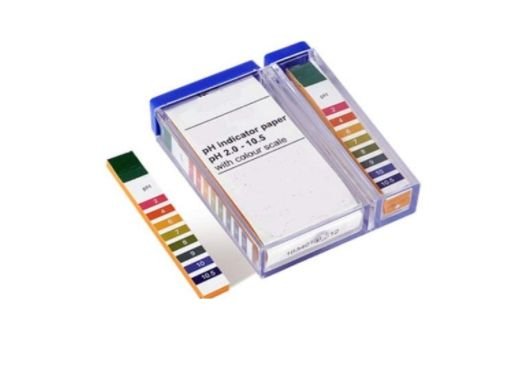PH PAPER STRIP (COST: RS.450/10 BOOKLETS)
₹450.0
Check acidity or alkalinity of ready pH or composting pile.
Make 1:10 solution of compost in Distilled water, and allow it
to settle for 1 hour
Dip the pH strip in clear compost solution, and match the
colour on indicator strip
pH Paper Strips Rs.450:
Embracing eco-friendly products transforms waste into wealth, fostering sustainability and mitigating environmental impact. Innovative initiatives champion the conversion of discarded materials into valuable resources, paving the way for a circular economy.
To commence this virtuous cycle, recycling emerges as a key player. Plastics, paper, and metals, once destined for landfills, undergo a metamorphosis. These materials are reimagined, reincarnated into new products, reducing the demand for virgin resources and curbing pollution.
Biodegradable alternatives further revolutionize our consumption patterns. Products derived from natural materials seamlessly integrate into the ecosystem, leaving minimal traces. This shift not only reduces the burden on landfill sites but also curtails the persistence of harmful substances in the environment.
In the realm of waste-to-wealth, upcycling emerges as a creative force. Discarded items find a second life, elevated into functional and aesthetically pleasing artifacts. From repurposed furniture to fashionable accessories, upcycling not only minimizes waste but also showcases the beauty of sustainable design.
In the business landscape, companies increasingly adopt a cradle-to-cradle approach. This entails designing products with their end-of-life in mind, ensuring that materials can be easily disassembled and reused. Such practices not only enhance resource efficiency but also cultivate a mindset of responsibility within the industry.
pH Paper Strips Rs.450: The waste-to-wealth paradigm extends beyond tangible goods to energy production. Biomass, a byproduct of organic waste, becomes a valuable energy source through anaerobic digestion or incineration, contributing to the renewable energy matrix.
In conclusion, the transition to eco-friendly products and the waste-to-wealth philosophy signifies a revolutionary stride towards a sustainable future. By reimagining waste as a valuable resource, society not only mitigates environmental harm but also forges a path toward a regenerative and harmonious relationship with the planet.
You must be logged in to post a review.
Q & A
1. Eco-Friendly Materials
Biodegradable Indicators: The color indicators used in pH paper strips are often organic and biodegradable. These indicators break down more readily in the environment compared to synthetic dyes used in other testing products.
Minimal Additives: pH paper strips typically use a minimal amount of additives compared to more complex laboratory products, reducing the environmental footprint associated with chemical production and disposal.
2. Reduced Resource Consumption
Compact Design: The compact and lightweight nature of pH paper strips means they require less packaging and shipping resources compared to bulkier laboratory equipment or chemical solutions. This reduction in packaging contributes to a lower carbon footprint associated with transportation and waste.
Efficient Usage: pH paper strips are designed for single-use but are precise and effective in small quantities. This efficiency ensures that only the necessary amount of material is used, minimizing waste.
3. Environmental Impact of Production
Lower Carbon Emissions: The production of pH paper strips generally involves fewer stages and less energy compared to complex laboratory devices. According to research in the "Journal of Cleaner Production," simpler products often have a smaller carbon footprint due to reduced energy and resource requirements (Source).
Sustainable Sourcing: Many manufacturers of pH paper strips use sustainably sourced paper and biodegradable coatings. Companies may adhere to environmental certifications, such as FSC (Forest Stewardship Council), ensuring that their raw materials are sourced responsibly.
4. Lifecycle Considerations
Long Shelf Life: pH paper strips generally have a long shelf life and do not require special storage conditions, which reduces the need for additional resources and energy for their preservation.
Minimal Maintenance: Unlike electronic pH meters, pH paper strips require no maintenance or calibration, which avoids the environmental impact associated with the production, use, and disposal of electronic devices.
5. Comparative Analysis
- Comparison to pH Meters: Electronic pH meters, while reusable, often have a higher environmental impact due to the need for batteries, electronic components, and more complex manufacturing processes. The carbon footprint of these devices includes not only their production but also their disposal and the environmental impact of battery use (Source).
6. Scientific References
Lifecycle Analysis: According to a study published in "Environmental Science & Technology," simpler products with fewer components and less energy-intensive production processes generally exhibit a lower environmental impact (Source).
Biodegradability of Cellulose: The "International Journal of Environmental Research and Public Health" provides evidence that cellulose and other natural fibers are biodegradable and have a lower environmental impact compared to synthetic materials (Source).
General Inquiries
There are no inquiries yet.

















Reviews
There are no reviews yet.